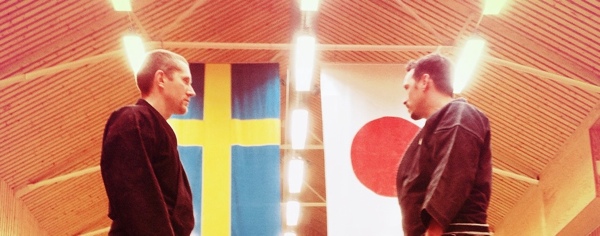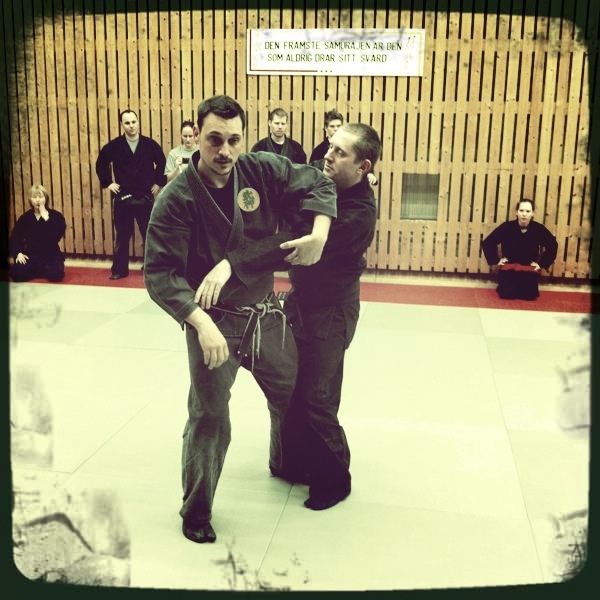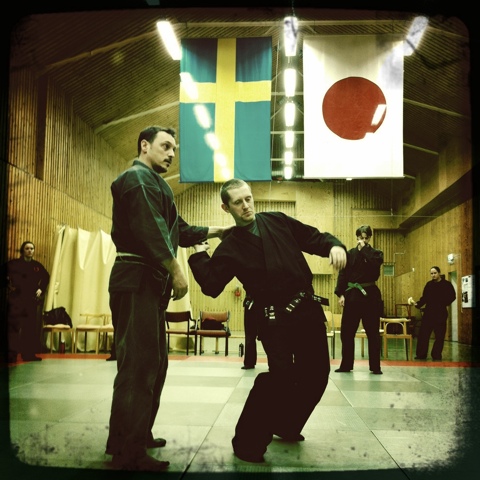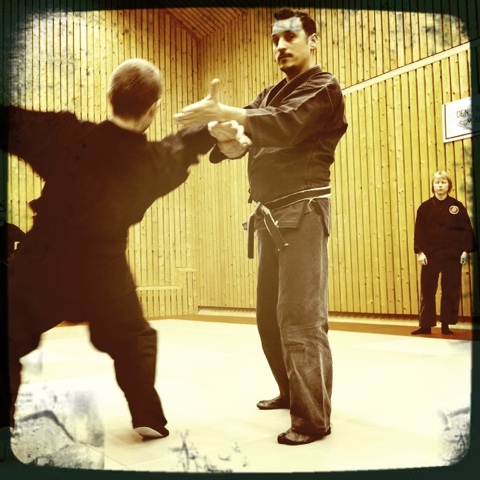From Bujinkan Santa Monica by Bujinkan Santa Monica
Suki are strange vermin. You think you see one, then it's gone. You train your ass off to get rid of them, then find they are all over, and in places you never looked! And if you ignore them, they seem to multiply.
What are these intransigent vermin and what can be done about them? 隙 "Suki" is the Japanese term for "opening" or "gap" and refers to a weakness in your or your opponent's defenses. Suki can present opportunities to attack or be presented to draw an attack. These suki can be found in the timing, distance, angle, mind, or even spirit. This is partly what Soke Hatsumi means about being Zero. He says,
"If one reaches to a higher rank, he need only eliminate his faults. It may sound easy, but eliminating faults is very difficult to accomplish, because we tend to think we are faultless. Faults can be translated into something different in Budo. They can be suki (unguarded points), or carelessness, presumption, arrogance, etc. - they all become our fault. No fault, zero condition is the best."
Suki 好き can also mean likes or preferences. So the things you like and your desires or attachments can become suki. The kamae seigan when done properly gives no easy opening. To defeat this kamae maybe you look for an opening of desire. This is why seigan is sometimes written as 正願 "correct desire," to help you purify your desires and give no 隙 suki.
We first try to learn about suki through kamae. An ideal kamae has no suki. No openings or opportunities for attack. It also means no wasted or futile movement.
Next we learn about suki through ukemi. Paraphrasing Jim Vance: we learn more through assuming the role of uke, the focus on receiving techniques or sutemi allows the uke to feel the connection between them and their partner, or how a particular technique affects them. The uke is feeling suki (openings) in the connection; the body can feel suki through ukemi, it is aware of suki through sutemi (there is no self and other, only the connected unit).
Hatsumi Sensei describes this:
Takamatsu-sensei often told me, 'Mr. Hatsumi, to receive techniques is to take a person in, to take in their whole being--in other words, if a person's capacity for generosity and courage are not great, they will not be able to do it.
' An uke who selfishly tries to escape is not an uke.
Suki discovered through kamae and ukemi are the basic suki. They appear during regular and consistent training. Suki such as "a weakness of the mind” or “a weakness of the spirit" are more difficult to ascertain. And more esoteric still are the suki of the kukan or the universe.
Ueshiba (the founder of Aikido) wrote: As your Bujutsu training approaches perfection you will be able to detect the [weakness in the enemy's technique], the suki, even before he can, and as if to satisfy some deficiency in him, you can fill the opening [weakness] with your technique."
There is a feeling when you take your opponent's suki as if you are filling a void. Just be careful not to be sucked in by the emptiness!
The Zen monk Takuan Soho wrote about avoiding “suki” by means of the “mind abiding nowhere.”
Hatsumi Sensei describes this as a point where there is no difference between attacker and defender. It is all one. The suki or opening is between your mind and his mind. Your body and his body. As you close that opening, you may sense his weakness and your own... and surely you know how to exploit that!
Soke also suggests to us that being shielded or having suki ultimately are inseparable concepts. He says that being connected in the Kukan can create Kukan no tate, where the kukan itself protects your openings. Further, there is Kukan no suki whereby your life is in the kukan and you open up a space (suki) for you to live.
Or, as
Doug Wilson describes it, you "allow your shield to protect your openings and your openings to lower the shield of the opponent."



…







 Den här gången var vi tre stycken från Kaigōzan dōjō. Det var endast en till från Stockholm, de flesta övriga kom från Norrköping, Linköping och Trollhättan. Det var totalt ca 25 deltagare under båda dagarna.
Den här gången var vi tre stycken från Kaigōzan dōjō. Det var endast en till från Stockholm, de flesta övriga kom från Norrköping, Linköping och Trollhättan. Det var totalt ca 25 deltagare under båda dagarna. Träningen var avslappnad och lekfull. Alla fick gott om tid att träna på den visade tekniken. Medan Shawn gick runt och hjälpte alla.
Träningen var avslappnad och lekfull. Alla fick gott om tid att träna på den visade tekniken. Medan Shawn gick runt och hjälpte alla. Om någon trodde att Sōke helt plötsligt skulle visa grunderna på ett grundligt sätt lär nog bli besvikna. Min personliga åsikt till varför han inte gör det är för att då skulle många kopiera exakt och tro att det är det enda rätta. Enligt min och många andras uppfattning är att det finns flera olika sätt som är korrekt, vad som blir korrekt är vad omständigheterna (motståndarens karaktär, balans, humör, omgivning etc) runt utförandet skapar. Det finns många fler dimensioner och omständigheterna är aldrig exakt likadana två gånger i rad.
Om någon trodde att Sōke helt plötsligt skulle visa grunderna på ett grundligt sätt lär nog bli besvikna. Min personliga åsikt till varför han inte gör det är för att då skulle många kopiera exakt och tro att det är det enda rätta. Enligt min och många andras uppfattning är att det finns flera olika sätt som är korrekt, vad som blir korrekt är vad omständigheterna (motståndarens karaktär, balans, humör, omgivning etc) runt utförandet skapar. Det finns många fler dimensioner och omständigheterna är aldrig exakt likadana två gånger i rad.
